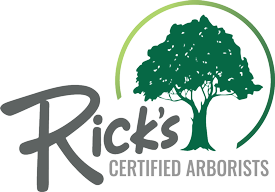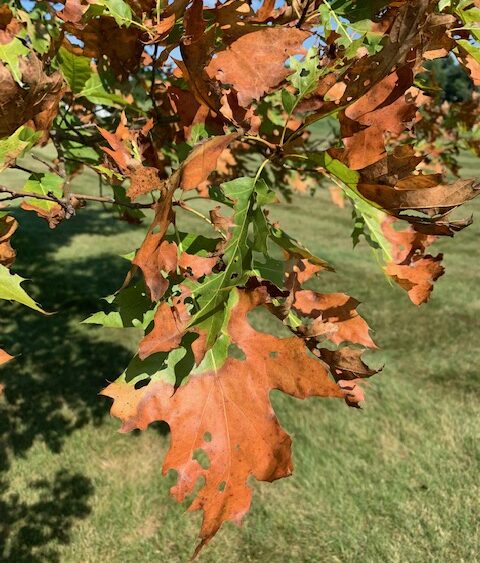It’s fall, which means the temperatures are getting cooler, apples are ripe for the picking, and every coffee shop in Pennsylvania is offering its own spin on the ubiquitous pumpkin spice latte. For arborists, fall is also significant, but for different reasons—it’s the time of year when we provide deep root feeding for trees, conduct scores of property inspections, and diagnose bacterial leaf scorch.
What Is Bacterial Leaf Scorch?
You might not have heard of bacterial leaf scorch (sometimes known as BLS), but it’s becoming endemic in eastern Pennsylvania and spreading westward from there, particularly on pine and red oaks. Even if you’ve never heard the term used before, you’ve likely seen a tree that has fallen victim to bacterial leaf scorch—the telltale sign is leaves that are browned along the margins.
Bacterial leaf scorch is caused by Xylella fastidiosa. The disease was first identified in the United States in the early 1980s and it has continued to spread thanks to leafhopper and treehopper insects. The infection partially blocks the flow of water to the leaves, which is why the edges of the leaves brown. Trees that are under stress typically develop more severe symptoms.
Signs of Bacterial Leaf Scorch
Whenever we perform a property inspection, we look for signs of bacterial leaf scorch. Because the symptoms are most noticeable in the fall—a time when leaves are naturally changing color anyway—many homeowners don’t give it much of a thought. Those who do may blame unusual weather or other stressors.
Aside from the fact that the margins of the leaves turn brown before the centers, the browning from bacterial scorch occurs earlier in the season than the normal leaf changes that occur in the fall. Left untreated, trees will leaf-out normally the next spring, but experience premature browning again. Every year, more branches have leaves that turn brown prematurely and eventually, limbs begin to die.
Bacterial Leaf Scorch Treatment in Pennsylvania
Unfortunately, there is no cure for bacterial leaf scorch. The good news is that there are ways to manage it and prolong the life of a tree infected by the disease – trunk injections of tetracycline cause symptoms to go into remission. Annual injections can allow you to enjoy your tree for many years to come. The University of Kentucky has found that pin oaks and red oaks treated with trunk injections can retain their leaves for weeks longer in the fall than untreated trees.
Knowing that your tree will require annual trunk injections to keep symptoms at bay, you may decide that it’s best to remove it and start over with one that is not susceptible to bacterial leaf scorch. The decision is yours to make, and we understand that it’s a difficult one for many homeowners. We do suggest that you either decide to treat your tree or remove it; leaving diseased trees on your property poses a safety risk. Although the earliest signs of bacterial leaf scorch are prematurely brown leaves and defoliation, the disease will eventually start to kill branches and limbs. A dead tree branch can fall to the ground on a windy day—or even on a day with no wind at all. It’s not a risk you want to take with your family.
Schedule a Property Inspection
Fall is a fantastic time to inspect the trees on your property for bacterial leaf scorch and other diseases. If you’d like to learn more or set up an appointment with our certified arborist, call Rick’s Certified Arborists today at 610-840-2655.


Comments are closed.